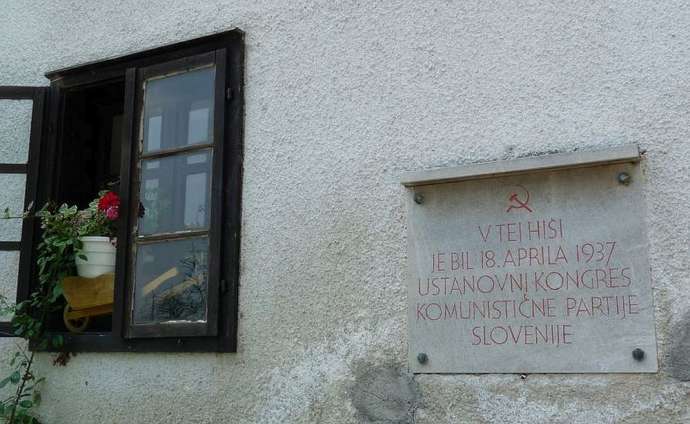April 17, 2019
In 1937 the Slovenian Communist Party was established in Čebine above Trbovlje as a formal implementation of a decision adopted at the fourth meeting of the Communist Party of Yugoslavia in 1934.
Revolutionary fever, which gained momentum during WWI, continued among demobilised farmers and workers with several rebellions and even attempts at establishing Soviet Republics in the Kingdom of Yugoslavia between the years 2018-19.
The Slovenian Communist Party was first established in 1920, but lost independence a month later after merging with the Yugoslav Communist Party. It adopted a thesis of one Yugoslav nation composed of three tribes, the revolution and the dictatorship of the proletariat as its goal.
In 1920 communist activity was banned by a decree, and a year later completely pushed into the underground following a few notable assassinations that were ascribed to communists.
In early 1930 young Russian educated communists such as Boris Kidrič and Edvard Kardelj begun a communist revival in Slovenia. In December 1934 the Communist Party of Yugoslavia held a congress in Ljubljana where a conclusion was adopted to establish Communist Parties of Slovenia and Croatia, but also Macedonia in the future – under the clear condition that the Communist Party of Yugoslavia would remain unified and centralised. This was finally implemented in 1937, mostly due to low numbers of communists in the country in 1934.
The ideological background of the Party in early the 30s was vague and addressed little to none of the pressing questions of the day. Clearer goals were then recognised on the Communist International in Moscow in the summer of 1935, which established fascism as the main enemy of communism, the people and nations as such, and which also allowed petit bourgeoisie to join the revolutionary struggle.
In this context of a polity of a People's Front against all forms of fascism, the Slovenian Communist Party was secretly established on April 17, 1937, with Edvard Kardelj as its leader. When in the same year Josip Broz Tito took the leadership of the Yugoslavian Communist Party, three of the Slovenian communist leaders were included into its leadership: Edvard Kardelj, Franc Leskošek and Miha Marinko.
The People's Front policy concluded two years later with the Ribbentropp-Molotov pact, between Stalin and Hitler, which prompted several early Slovenian communists such as Angela Vode, to leave the Party, while the remainder of the leadership decided to bow to Moscow. In the next two years the Slovenian Communist Party softened its anti-fascist propaganda and replaced it with a struggle against “Western imperialists” instead.






